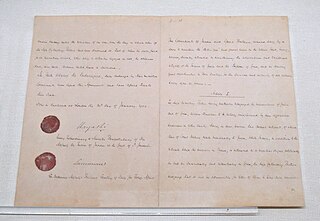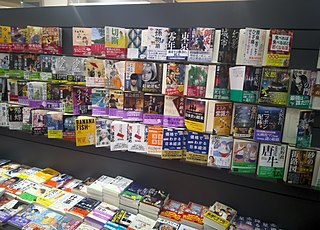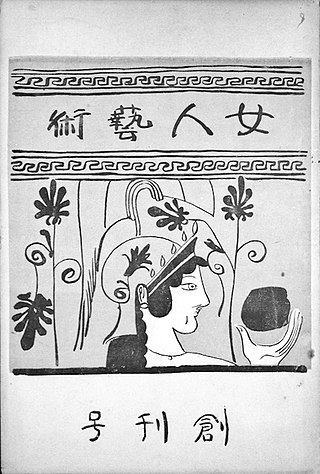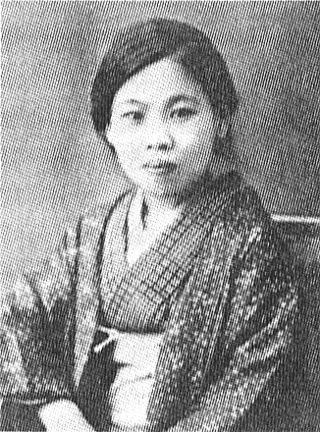
The Russo-Japanese War was fought between the Empire of Japan and the Russian Empire during 1904 and 1905 over rival imperial ambitions in Manchuria and the Korean Empire. The major theatres of military operations were in Liaodong Peninsula and Mukden in Southern Manchuria, and the Yellow Sea and the Sea of Japan.

The Treaty of Shimonoseki, also known as the Treaty of Maguan in China and Treaty of Bakan in the period before and during World War II in Japan, was a treaty signed at the Shunpanrō hotel, Shimonoseki, Japan on April 17, 1895, between the Empire of Japan and Qing China, ending the First Sino-Japanese War. The peace conference took place from March 20 to April 17, 1895. This treaty followed and superseded the Sino-Japanese Friendship and Trade Treaty of 1871.

The Treaty of Saint Petersburg between the Empire of Japan and the Russian Empire was signed on 7 May 1875, and its ratifications exchanged at Tokyo on 22 August 1875. The treaty itself went into effect in 1877.

The Chinese Eastern Railway or CER, is the historical name for a railway system in Northeast China.

The first Anglo-Japanese Alliance was an alliance between Britain and Japan. It was in operation from 1902 to 1922. The original British goal was to prevent Russia from expanding in Manchuria while also preserving the territorial integrity of China and Korea. For the British, it marked the end of a period of "splendid isolation" while allowing for greater focus on protecting India and competing in the Anglo-German naval arms race. The alliance was part of a larger British strategy to reduce imperial overcommitment and recall the Royal Navy to defend Britain. The Japanese, on the other hand, gained international prestige from the alliance and used it as a foundation for their diplomacy for two decades. In 1905, the treaty was redefined in favor of Japan concerning Korea. It was renewed in 1911 for another ten years and replaced by the Four-Power Treaty in 1922.

In Japan, bunkobon (文庫本) are small-format paperback books, designed to be affordable and space saving.

Ema are small wooden plaques, common to Japan, in which Shinto and Buddhist worshippers write prayers or wishes. Ema are left hanging up at the shrine, where the kami are believed to receive them. This is particularly evident at shrines such as the at Ikoma Shrine, where ema more often than usual indicate great despair or tragedy in one's life and show a heavy dependence on divine intervention. However, ema have been hung up for many other purposes, such as advertisements for certain Kabuki groups at shrines such as Naritasan Shinshôji in the Chiba prefecture. Typically 15 cm (5.9 in) wide and 9 cm (3.5 in) tall, they often carry images or are shaped like animals, or symbols from the zodiac, Shinto, or the particular shrine or temple. In ancient times, people would donate horses to the shrines for good favor; over time this was transferred to a wooden plaque with a picture of a horse, and later still to the various wooden plaques sold today for the same purpose. Once inscribed with a wish, ema are hung at the shrine until they are ritually burned at special events, symbolic of the liberation of the wish from the writer. Ema can be hung up either for one's personal benefit, or the benefit of another. There is no specified format for creating ema. Typically, one side has the wishes inscribed in text, and the other is left for imagery should it be desired.

Censorship in the Empire of Japan was a continuation of a long tradition beginning in the feudal period of Japan. Government censorship of the press existed in Japan during the Edo period, as the Tokugawa bakufu was in many ways a police state, which sought to control the spread of information, including Christianity, the influx of Western ideas, pornography and any political writings critical of the shōgun and government.
Shōwa modan or Shōwa Modern was a style of visual arts, design, architecture, and music that was a fusion between Japanese and Western styles which emerged in the early Shōwa era during the interwar period.

Japan–Montenegro relations refers to the bilateral relationship between Japan and Montenegro. Japan recognised Montenegro on 16 June 2006, stating then that "the policy of the Government of Japan [is] to attach importance to the peace and stability of Western Balkans countries including Montenegro".

Japan is currently engaged in several territorial disputes with nearby countries, including Russia, South Korea, North Korea, the People's Republic of China, and the Republic of China (Taiwan).

The Aesthetics of Shadow: Lighting and Japanese Cinema is a 2013 book written by Daisuke Miyao. As the title suggests, the book is based on the cinema of Japan.

Tsuruko Haraguchi was a Japanese psychologist and the first Japanese woman to receive a Doctor of Philosophy.

The foreign policy of the Russian Empire covers Russian foreign relations from their origins in the policies of the Tsardom of Russia down to the end of the Russian Empire in 1917. Under the system tsarist autocracy, the Emperors/Empresses made all the main decisions in the Russian Empire, so a uniformity of policy and a forcefulness resulted during the long regimes of powerful leaders such as Peter the Great and Catherine the Great. However, several weak tsars also reigned—such as children with a regent in control—and numerous plots and assassinations occurred. With weak rulers or rapid turnovers on the throne, unpredictability and even chaos could result.

The Nyonin Geijutsu (女人芸術), which translates to Women's Arts, was a Japanese women's literary magazine that ran from July 1928 to June 1932. It was published by Hasegawa Shigure. They published 48 issues that focused on feminism and women's art and literature. It was one of the most influential Japanese literary women's magazines since the Bluestocking.
Heibon Punch was a weekly Japanese men's magazine published by Heibon Shuppan. It was first published on April 28, 1964, and continued until 1988. The magazine featured articles on lifestyle, fashion, sports, political issues, and sex, rivaling with Weekly Playboy, launched two years later.
This is a select bibliography of post World War II English language books and journal articles about the Russia during the First World War, the period leading up to the war, and the immediate aftermath. For works on the Russian Revolution, please see Bibliography of the Russian Revolution and Civil War. Book entries may have references to reviews published in English language academic journals or major newspapers when these could be considered helpful.

Tadako Urata was a Japanese physician, trained in ophthalmology in Germany. She and her husband ran a clinic in Tianjin, China, from 1912 to 1932.

Hanayo Ikuta, born Nishizaki Hanayo, was a Japanese feminist writer, editor, and educator.
Contents tourism is term used in Japanese media and tourism studies to describe tourist activities that involve places which are setting of works of literature, films, television dramas, manga, anime, and video games.















